AFRO AMERİKAN SAÇ EKİMİ
Challenges and Considerations in African American Hair Transplantation
Hair transplantation is a sophisticated procedure that requires a deep understanding of various hair types to achieve optimal results. Among these, African American hair presents unique challenges that demand a higher level of precision, expertise, and care compared to non-curly, straight hair types. This blog delves into the reasons behind these challenges and the methodologies employed to address them.
The Two Traditional Extraction Methods: FUT and FUE. There are two primary techniques used for extracting hair follicles in hair transplantation: Follicular Unit Transplantation (FUT) and Follicular Unit Extraction (FUE). FUT, the older of the two methods, involves removing a strip of scalp tissue from the donor area, from which hair follicles are then dissected and implanted into the recipient area. This method, while effective, can result in a linear scar, making it less desirable for patients who prefer to wear their hair short.
View More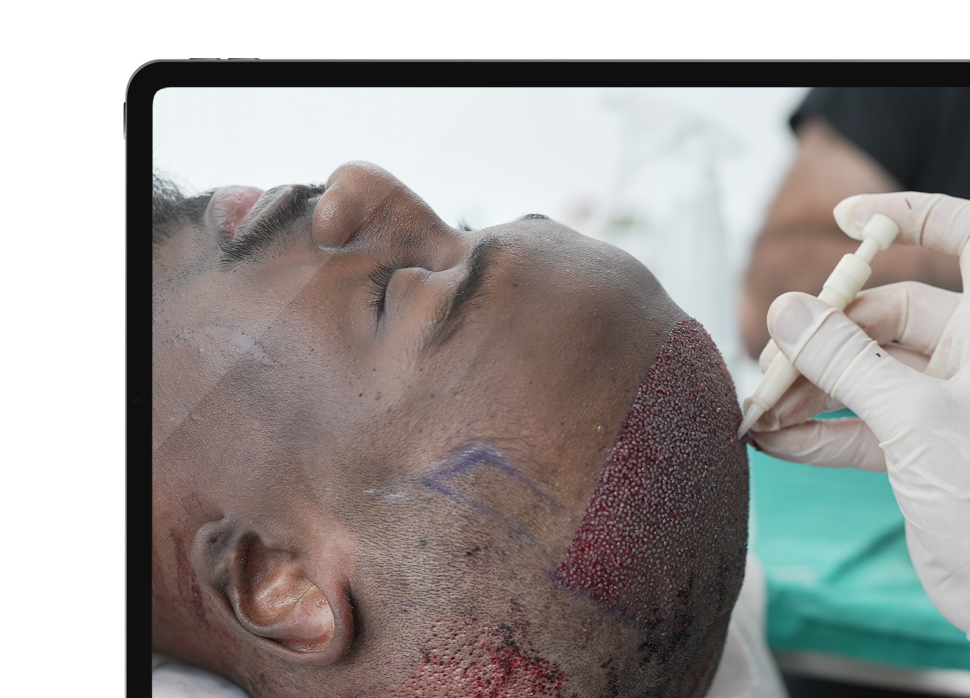
Differences Between Sedation and Local Anesthesia
Unlike sedation, there is no need to fast before undergoing local anesthesia. You can have breakfast before the procedure and even have lunch during the break between the operation. Although the drugs used in sedation and local anesthesia are the same, the sedation method may cause side effects such as nausea, weakness, or vomiting. In contrast, with the sedation method, you will not remember or feel anything during the procedure. However, with local anesthesia, you may experience some initial discomfort lasting about 5 minutes, which can be reduced by 80% using a painless anesthesia technique.
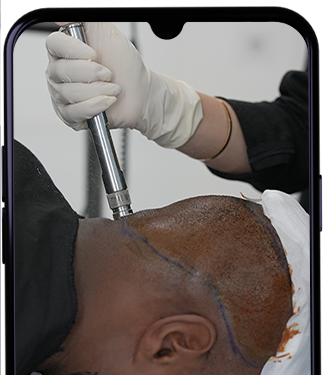
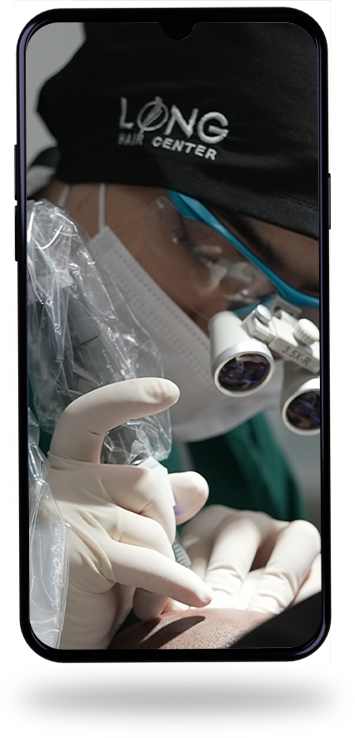
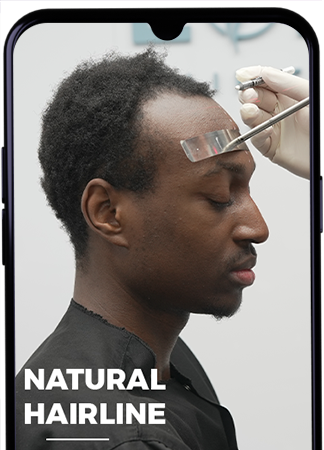
The Complexity of Extracting Afro-Textured Hair Grafts
One of the most significant differences between African American hair and other hair types is the unique structure of Afro-textured hair. Unlike straight or wavy hair, Afro hair is curly both above the skin's surface and beneath it. This characteristic makes the extraction of hair grafts more complex and requires a more meticulous approach.
When performing hair transplants on individuals with straight hair, the punch device used for extraction typically has a diameter of 0.9 mm and a length of approximately 4 mm. This straight rotating punch is sufficient for extracting hair follicles in a non-curly pattern. However, this tool is not suitable for Afro-textured hair due to the hair’s natural curl beneath the skin’s surface. The curliness of Afro hair follicles under the skin means that using a standard punch could damage the follicles, leading to a lower success rate and potentially harming the overall outcome of the transplant.
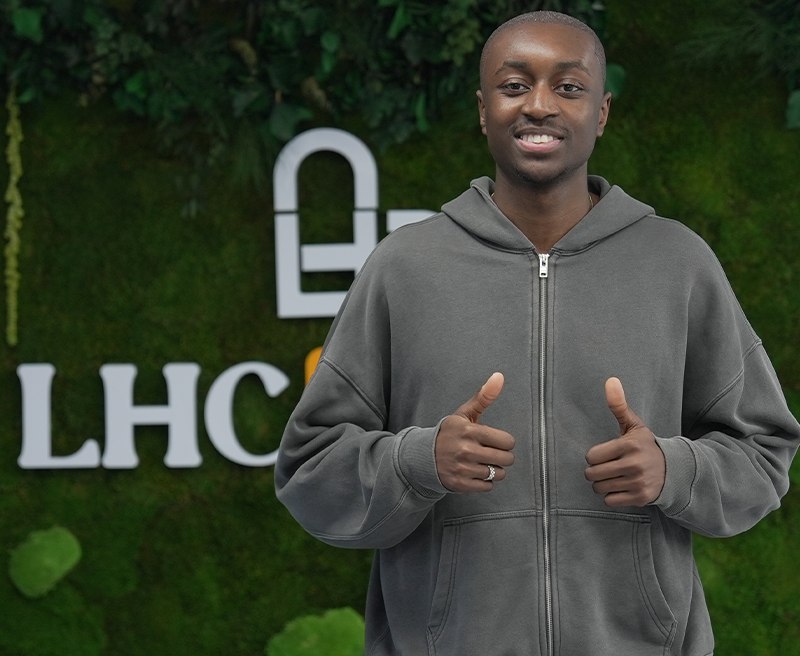
The Advantage of Afro Hair in Achieving Greater Density
Afro-textured hair has a distinct advantage over straight hair types when it comes to achieving density after transplantation. Due to the natural curl and thickness of Afro hair, fewer grafts are needed to create the appearance of fullness. In a recent study, it was observed that 3,500 grafts in an African American hair transplant could produce results equivalent to 5,000 grafts in a patient with straight hair. This means that African American patients can achieve the desired density with fewer grafts, making the procedure more efficient and often more cost-effective.
However, the key to achieving this density lies in the quality and health of the extracted grafts. If the grafts are damaged during extraction, the success rate of the transplant diminishes, leading to less satisfactory results. Therefore, it is imperative that the surgeon handling the procedure has substantial experience and a deep understanding of Afro-textured hair. The careful and precise extraction of each graft ensures that the hair roots remain viable, leading to better growth and a more natural looking result post-transplant.
Hair transplantation in African American patients is a specialized field that requires a nuanced approach due to the unique structure of Afro textured hair. The complexity of the procedure, from the modified extraction techniques to the careful handling of grafts, underscores the importance of choosing a highly skilled and experienced hair transplant specialist. While the process may be more challenging and time consuming compared to non-curly hair transplants, the results can be equally, if not more, rewarding. Afro hair's natural density and curl pattern provide distinct advantages, allowing patients to achieve a fuller, more natural look with fewer grafts. However, this success hinges on the expertise of the surgeon, making it crucial for patients to seek out professionals who are well-versed in the intricacies of African American hair transplantation.
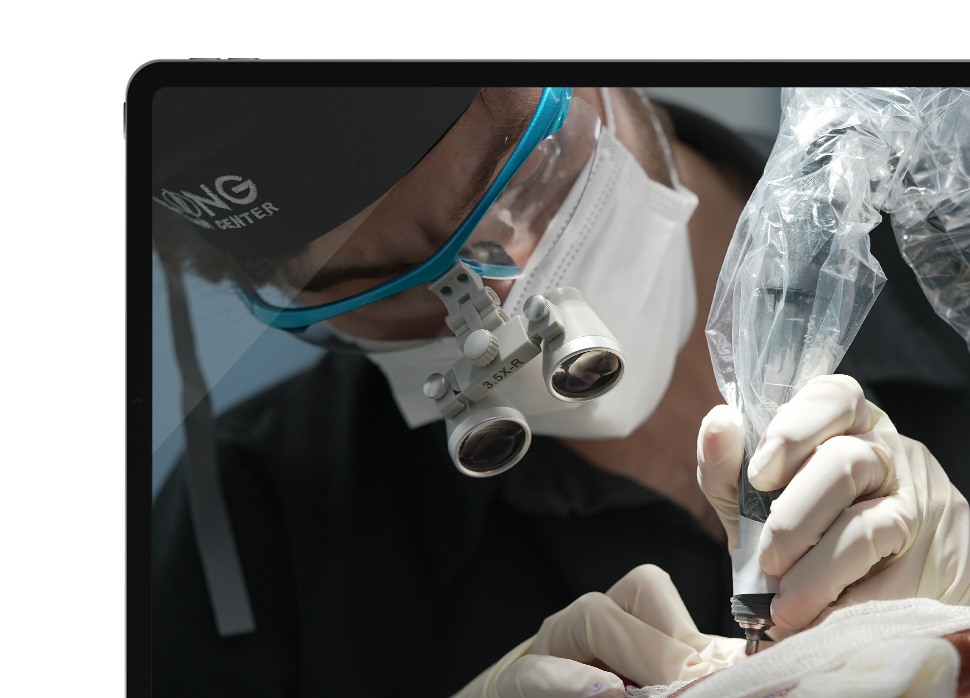
TEDAVİLERİMİZ
TEKNOLOJİLERİMİZ
Afro-Amerikan Saç Ekiminde Zorluklar ve Dikkat Edilmesi Gerekenler
Saç ekimi, en iyi sonuçlara ulaşmak için çeşitli saç tiplerinin derinlemesine anlaşılmasını gerektiren karmaşık bir prosedürdür. Bunlar arasında Afro-Amerikan saçları, kıvırcık olmayan, düz saç tiplerine kıyasla daha yüksek düzeyde hassasiyet, uzmanlık ve bakım gerektiren benzersiz zorluklar sunar. Bu blog, bu zorlukların ardındaki nedenleri ve bunları çözmek için kullanılan yöntemleri araştırıyor.
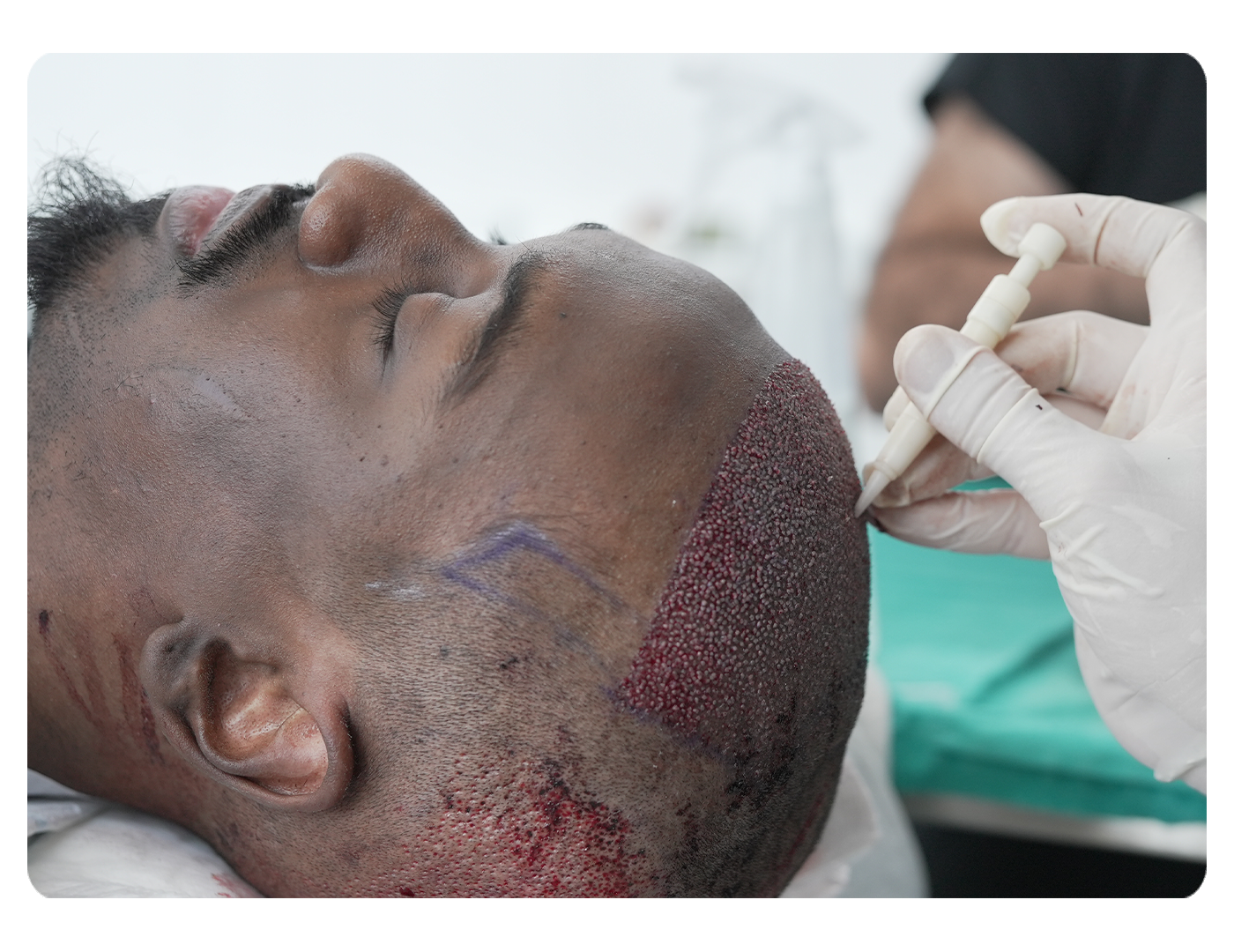
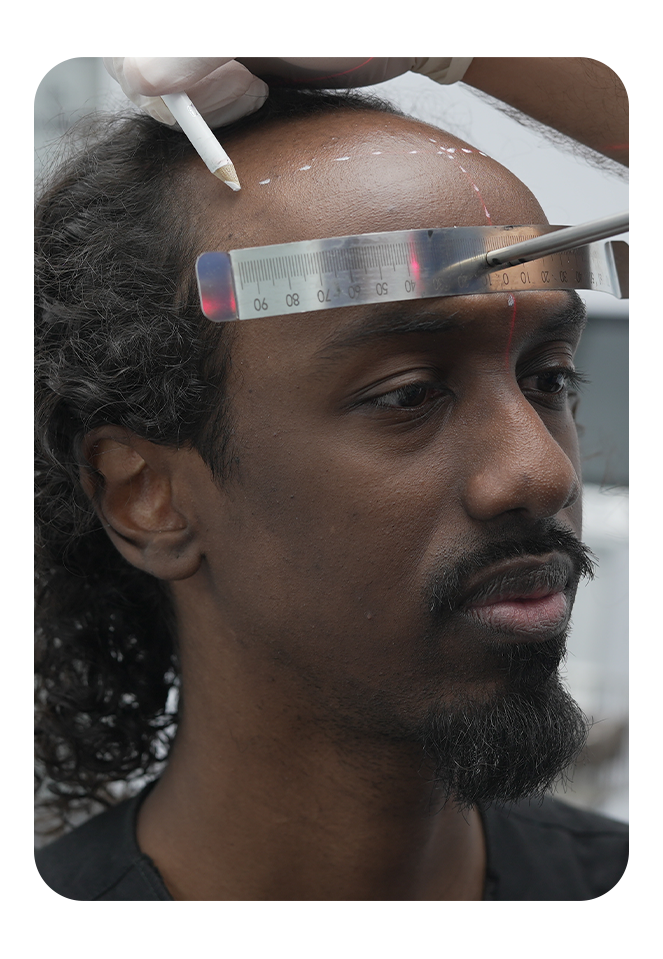
İki Geleneksel Ekstraksiyon Yöntemi: FUT ve FUE
Saç ekiminde saç köklerinin çıkarılması için kullanılan iki temel teknik vardır: Foliküler Ünite Transplantasyonu (FUT) ve Foliküler Ünite Ekstraksiyonu (FUE). İki yöntemden daha eskisi olan FUT, donör bölgesinden bir şerit kafa derisi dokusunun çıkarılmasını ve daha sonra buradan saç köklerinin kesilip alıcı bölgeye nakledilmesini içerir. Bu yöntem etkili olmasına rağmen doğrusal bir yara izine neden olabilir, bu da saçlarını kısa kullanmayı tercih eden hastalar için daha az tercih edilir hale getirir.
FUE ise özellikle Afrika kökenli Amerikalılar gibi kıvırcık saçlı hastalar için daha gelişmiş ve tercih edilen tekniktir. FUE, özel bir punch cihazı kullanılarak saç köklerinin tek tek çıkarılmasını içerir. Bu yöntem minimum yara izi bırakır ve maksimum sayıda saç grefti hassasiyetle çıkarma kabiliyeti nedeniyle tercih edilir. Etkinliği ve daha az invaziv yapısı nedeniyle FUE, Afrika kökenli Amerikalı hastalarda çekim için başvurulan yöntem haline geldi.
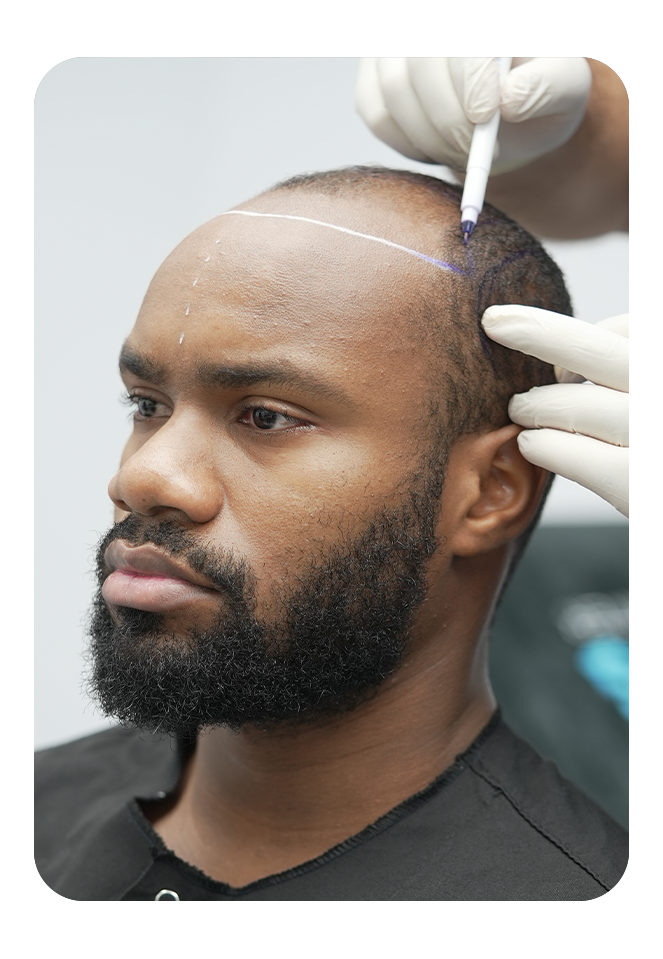
Doğrudan Saç Ekiminin (DHI) Yükselişi
FUE popüler bir seçim olmayı sürdürürken, Doğrudan Saç Ekimi (DHI), Afro-Amerikan saç ekimi için tercih edilen yöntem olarak ortaya çıkmıştır. DHI, FUE tekniğinin geliştirilmiş bir versiyonu olup, çıkarılan saç kökleri, Choi İmplanter Kalemi adı verilen özel bir alet kullanılarak doğrudan alıcı alana nakledilir. Bu kalem, implantasyon sırasında her bir saç folikülünün açısı, derinliği ve yönü üzerinde daha fazla kontrol sağlar; bu da özellikle Afro dokulu saçlar için faydalıdır. DHI, hasar riskini en aza indiren saç greftlerinin daha az işlenmesi ve foliküllerin daha hassas yerleştirilmesiyle daha yüksek yoğunluk elde etme yeteneği dahil olmak üzere çeşitli avantajlar sunar. Afro-Amerikan saçlarının benzersiz kıvrımı ve dokusu göz önüne alındığında, DHI'nın sunduğu hassasiyet ve kontrol, onu doğal ve estetik açıdan hoş sonuçlar elde etmek için en uygun yöntem haline getiriyor.
Afro Dokulu Saç Greftlerinin Çıkarılmasının Karmaşıklığı
Afro-Amerikan saçlarının diğer saç tiplerinden en önemli farklarından biri de Afro-dokulu saçların kendine özgü yapısıdır. Düz veya dalgalı saçların aksine, Afro saçlar hem cildin yüzeyinin üstünde hem de altında kıvırcıktır. Bu özellik saç greftlerinin çıkarılmasını daha karmaşık hale getirir ve daha titiz bir yaklaşım gerektirir.
Düz saçlı kişilere saç ekimi yapılırken, çıkarma için kullanılan punch cihazının çapı genellikle 0,9 mm ve uzunluğu yaklaşık 4 mm'dir. Bu düz dönen punch, saç köklerinin kıvırcık olmayan bir şekilde çıkarılması için yeterlidir. Ancak bu alet, saçın cilt yüzeyinin altındaki doğal kıvrımından dolayı Afro dokulu saçlar için uygun değildir. Afro saç foliküllerinin cilt altında kıvırcık olması, standart bir punch kullanmanın foliküllere zarar verebileceği, daha düşük bir başarı oranına yol açabileceği ve potansiyel olarak naklin genel sonucuna zarar verebileceği anlamına gelir.

Afro-Amerikan Saç Ekiminde Uzmanlık ve Tecrübenin Önemi
Afro dokulu saçların çıkarılmasının karmaşıklığı göz önüne alındığında, cerrahın deneyimi ve uzmanlığı işlemin başarısında çok önemli bir rol oynamaktadır. Afro saçın nüanslarını iyi bilen deneyimli bir saç ekim uzmanı, en iyi sonuçlara ulaşmak için çok önemlidir. Afro dokulu saçlardan saç greftlerinin çıkarılması işlemi, kırılmayı veya hasarı önlemek için her greftin tek tek dikkatlice çıkarılması gerektiğinden çok daha hassas ve zaman alıcıdır.
Transplantasyonun başarısı büyük ölçüde alınabilecek sağlıklı greft sayısına bağlıdır. Afro-Amerikan saçlarında, modifiye punch tekniği kullanılarak seans başına 3.000 ila 3.500 arasında saç kökünün çıkarılması mümkündür. Bu sayı düz saçlar için ortalama greft sayısından daha düşük olsa da Afro saçların kendine özgü yapısı, ekim sonrası yoğunluk açısından avantaj sağlar.
Daha Fazla Yoğunluğa Ulaşmada Afro Saçın Avantajı
Afro dokulu saçlar, ekim sonrası yoğunluğa ulaşma konusunda düz saç tiplerine göre belirgin bir avantaja sahiptir. Afro saçların doğal kıvrımı ve kalınlığı nedeniyle dolgun görünüm oluşturmak için daha az grefte ihtiyaç duyulur. Yakın zamanda yapılan bir araştırmada Afro-Amerikan saç ekiminde 3.500 greftin, düz saçlı bir hastada 5.000 grefte eşdeğer sonuçlar üretebildiği gözlemlendi. Bu, Afrikalı Amerikalı hastaların daha az greft ile istenilen yoğunluğa ulaşabilecekleri ve prosedürün daha verimli ve çoğu zaman daha uygun maliyetli olacağı anlamına gelir.
Ancak bu yoğunluğa ulaşmanın anahtarı, çıkarılan greftlerin kalitesi ve sağlığında yatmaktadır. Greftlerin çıkarılması sırasında hasar görmesi durumunda ekimin başarı oranı düşer, bu da daha az tatmin edici sonuçlara yol açar. Bu nedenle, işlemi gerçekleştiren cerrahın önemli bir deneyime sahip olması ve Afro dokulu saçlar konusunda derin bir anlayışa sahip olması zorunludur. Her greftin dikkatli ve hassas bir şekilde çıkarılması, saç köklerinin canlı kalmasını sağlar, bu da ekim sonrası daha iyi bir büyüme ve daha doğal görünümlü bir sonuç sağlar.
Afrikalı Amerikalı hastalarda saç ekimi, Afro dokulu saçların benzersiz yapısı nedeniyle incelikli bir yaklaşım gerektiren uzmanlaşmış bir alandır. Modifiye ekstraksiyon tekniklerinden greftlerin dikkatli bir şekilde kullanılmasına kadar prosedürün karmaşıklığı, yüksek vasıflı ve deneyimli bir saç ekim uzmanı seçmenin önemini vurgulamaktadır. Kıvırcık olmayan saç ekimlerine kıyasla süreç daha zorlu ve zaman alıcı olsa da, sonuçlar da aynı derecede, hatta daha fazla ödüllendirici olabilir. Afro saçın doğal yoğunluğu ve kıvrılma şekli belirgin avantajlar sağlayarak hastaların daha az greft ile daha dolgun, daha doğal bir görünüm elde etmelerine olanak tanır. Ancak bu başarı, cerrahın uzmanlığına bağlıdır, bu da hastaların Afro-Amerikan saç ekiminin inceliklerini iyi bilen profesyonelleri aramasını hayati hale getirir.
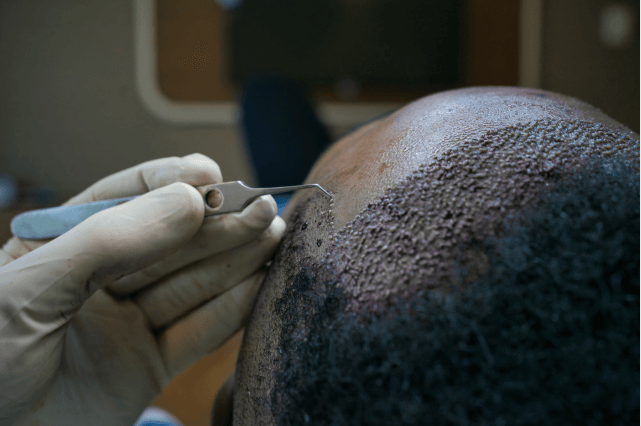
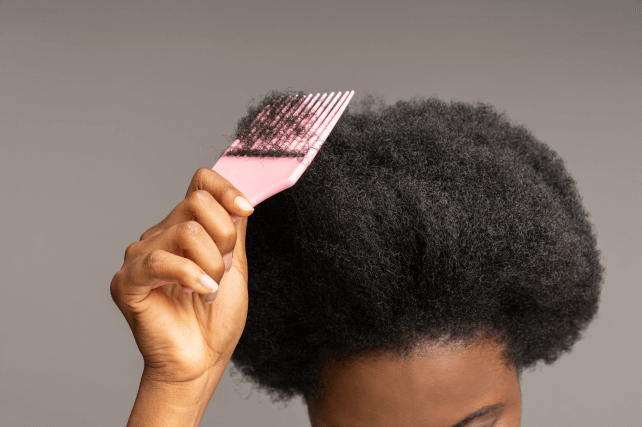
Sıkça Sorulan Sorular
The hair grafts are extracted from the backside of the head, which we determine as between two ears and above the neck. The reason for choosing this specific area as a donor (extraction zone) is that the hair grafts in this region are genetically encoded against inherent hair fall. If the extraction process from this region is performed with better quality artistry, hair fall will never occur for a lifetime. Therefore, we take the hair grafts from the backside of the head, which we call the donor area.
The hair roots are homogeneously extracted one by one with the help of the latest technology system called the FUE method. After the process is over, the hair will never grow the place taken from since it is taken with its root, but it will not be visible since it is done with cater-corner homogeneously
The hair grafts are extracted from the backside of the head, which we determine as between two ears and above the neck. The reason for choosing this specific area as a donor (extraction zone) is that the hair grafts in this region are genetically encoded against inherent hair fall. If the extraction process from this region is performed with better quality artistry, hair fall will never occur for a lifetime. Therefore, we take the hair grafts from the backside of the head, which we call the donor area.
The hair roots are homogeneously extracted one by one with the help of the latest technology system called the FUE method. After the process is over, the hair will never grow the place taken from since it is taken with its root, but it will not be visible since it is done with cater-corner homogeneously
After the hair transplant has been done, our medical consultant assistant will, without stint, follow the whole process with you until you achieve the best result. We will describe to you the growth process of all the hair grafts, respectively.
1-On the 10th day, the process of cleaning scabs will be done.
2-After one month, implanted hair begins to shed moderately.
3-The implanted hair enters the shock hair loss during the 2nd, 3rd, or 4th month, called the resting phase. During this process, you will face a view as if no hair transplant has been done.
4-At the end of the 4th month, the implanted roots will gradually start to grow progressively, and each month will grow faster and more hair than the previous month.
5-In the 7th month, almost 70% of the transplanted hair ultimately grows.
6-All transplanted hairs may take 12 months for the front zone and 14 months for the crown region to grow
The regrowth period of the transplanted hair may vary from person to person. It is a fact that hair roots come out earlier or later than expected, depending on a person's habits such as smoking, alcohol, drugs, and eating habits.
After the hair transplant has been done, our medical consultant assistant will, without stint, follow the whole process with you until you achieve the best result. We will describe to you the growth process of all the hair grafts, respectively.
1-On the 10th day, the process of cleaning scabs will be done.
2-After one month, implanted hair begins to shed moderately.
3-The implanted hair enters the shock hair loss during the 2nd, 3rd, or 4th month, called the resting phase. During this process, you will face a view as if no hair transplant has been done.
4-At the end of the 4th month, the implanted roots will gradually start to grow progressively, and each month will grow faster and more hair than the previous month.
5-In the 7th month, almost 70% of the transplanted hair ultimately grows.
6-All transplanted hairs may take 12 months for the front zone and 14 months for the crown region to grow
The regrowth period of the transplanted hair may vary from person to person. It is a fact that hair roots come out earlier or later than expected, depending on a person's habits such as smoking, alcohol, drugs, and eating habits.
In hair transplantation, the hair roots are extracted from the entire backside of the head, including above the ears and neck, which we call the donor area. The number of roots is determined according to the volume and quality of the bald area, and the extraction is done homogeneously. Since the extracted grafts from this particular donor area are immune to shedding from birth and are genetically coded against shedding, they do not shed and last a lifetime. Indeed, it is determined according to the knowledge and skills of the doctor who extracts these hair roots in a quality way and performs the hair transplant. Hair grafts are found in the donor region as a triple, double, and single hair. In addition, this grouped form differs from person to person. The important thing is to extract these grouped hair roots without cutting, destroying, and damaging them. People who do not have hair follicles in the donor area, either have been treated for cancer or are struggling with a different disease.
As a result, the transplanted roots never fall out again.
90% of the people who have hair transplants in the Long Hair Center do not have postoperative pain. The reason is that the local anesthesia before the surgery is applied with good quality, which causes less harm to the grafts during the operation. We put pain killer medicins between your medical kit after the operation. However, most of our patients who have hair transplants do not need it.





